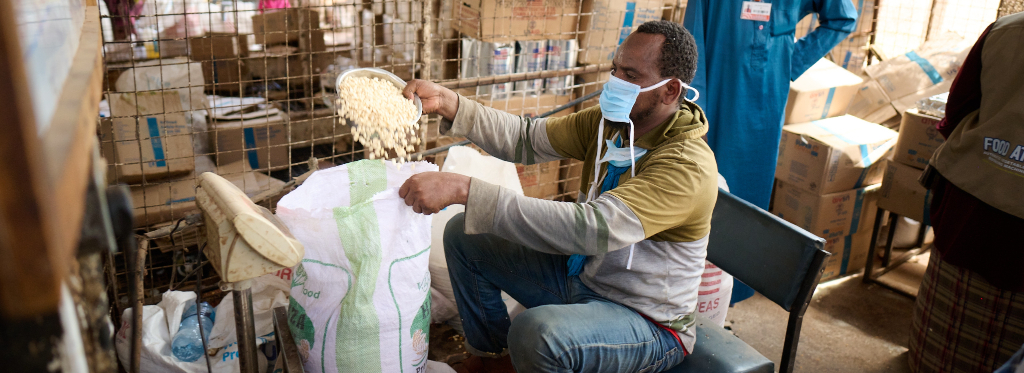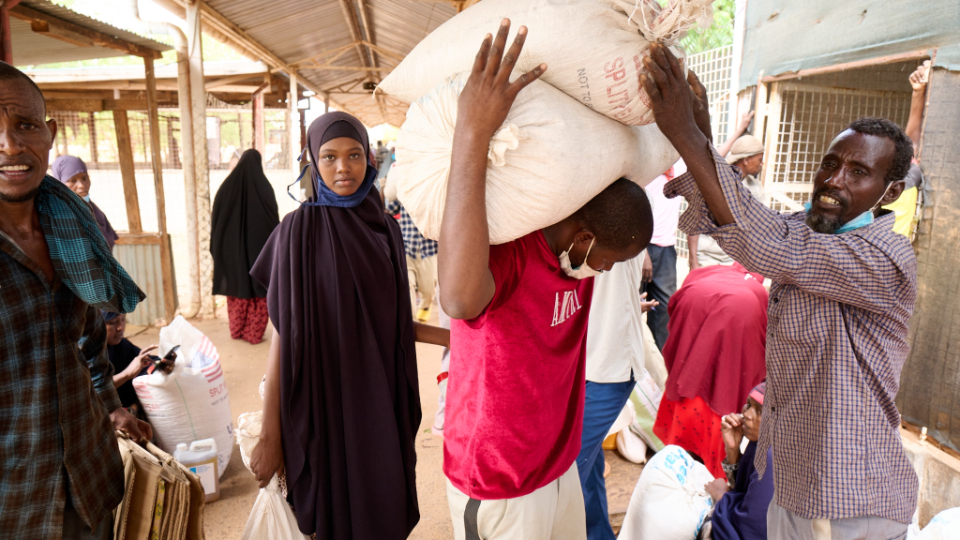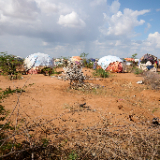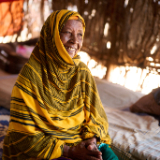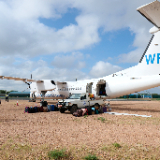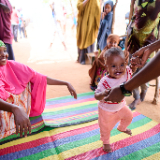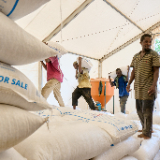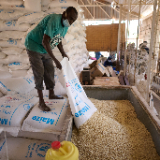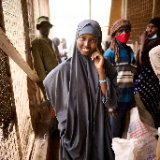It’s the first week of December 2022. Coming mostly from Somalia, tens of thousands of people, including many women and children, fleeing drought and war arrive at Dadaab camp in eastern Kenya. They are in desperate need of food and a greater sense of their God-given human dignity.
Thanks to the continuous efforts of the World Food Programme (WFP), these vulnerable groups are able to receive food, shelter and a moment of peace.
Habiba endured a 15-day walk with her children in a donkey cart to get here. “It was important for me to come because I needed food for my children,” she said. “We are pastoralists. Because of the drought [in Somalia], our animals died.”
| Temple Square is always beautiful in the springtime. Gardeners work to prepare the ground for General Conference. 2012 Intellectual Reserve, Inc. All rights reserved. | 1 / 13 |
Another Habiba and her four children have lived here for 14 years. She said they came in search of what anyone would want: “a place that is stable, that is peace for me and my children.”
Hassan is the same. “What I would want for my family would be that we would not have the refugee status in the future, that we would be the same as any other person, that we would have a better life than the one we currently are in,” she said.
Mohammed is a child in family of nine. His father is diabetic, his mother blind. He dreams of becoming a doctor.
“With the current restrictions we have, it might not be possible, but it’s a wish that I have,” he said. “My wish to become a doctor is because I would want to give back to the community and do something for them.”
These four at the Ifo Refugee Camp are some of the 320,000 refugees and asylum seekers who call these temporary settlements — also comprising the Dagahaley and Hagadera Camps — home. Each was built to hold 50,000 people. Today, they house twice that. They are run by the United Nations High Commission for Refugees, in collaboration with organizations such as WFP and the Kenya Red Cross.
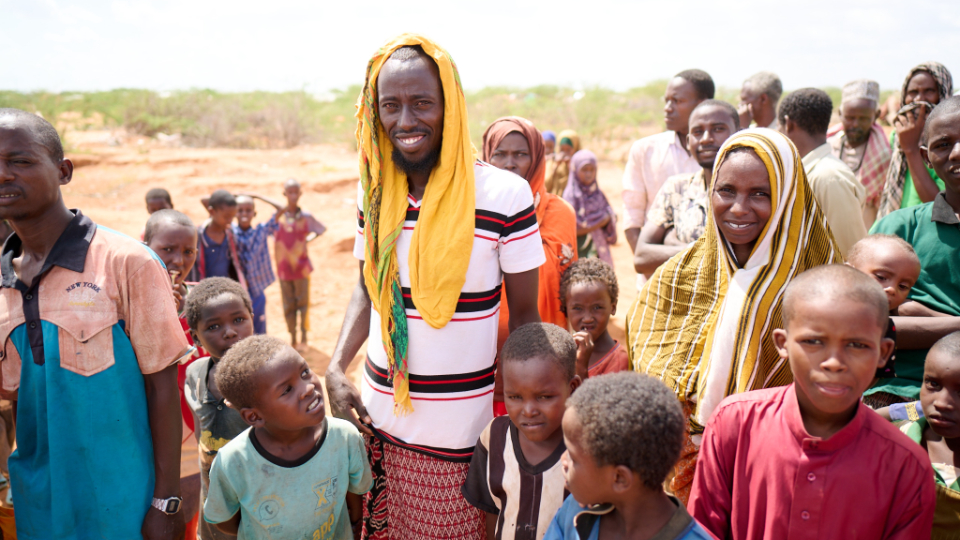
20221205_044120_Nilsson_LES_9463_.jpg
A family arrives at the Ifo Refugee Camp in Dadaab, Kenya, on Monday, December 5, 2022.2022 by Intellectual Reserve, Inc. All rights reserved.To see these refugees come and fill a bag with grain (44,230 households also receive electronic cash transfers to be used in local markets) is to see donated dollars at work. In September 2022, The Church of Jesus Christ of Latter-day Saints gave WFP US$32 million — a donation made possible by the generosity of everyday Latter-day Saints and friends of the faith.
Sarah Borchers, head of WFP’s Dadaab office, says the Church’s donation is “invaluable.” According to WFP reports, the Dadaab camps’ acute malnutrition rates range from 5% to more than 13%.

20221205_031332_Nilsson_LES_7285_.jpg
Food rations are distributed at the Ifo Refugee Camp in Dadaab, Kenya, on Monday, December 5, 2022.2022 by Intellectual Reserve, Inc. All rights reserved.“We really value the opportunity to reach more people at a time when that’s been more critical,” Borchers said. “It enables us to go forward with confidence into 2023 — in particular reaching the new arrivals that we’re seeing every day at our camp. And we wouldn’t be able to do it without ... the Church.”
“Every time you donate your dollar, please be assured that every dollar donated to us, World Food Programme, will reach the refugees out there, will reach the persons most vulnerable out there,” added Colin Buleti of WFP Kenya. “It will put a smile on a child. And it will prevent hunger and malnutrition across the globe.”
Hussein Abdi of the Kenya Red Cross said the holistic approach of these joint projects engender stronger solutions: “We are very grateful for WFP and our donors because they have been there to provide the food assistance to the refugees. However, the situation is still grave. The refugees — they are still coming. Every day you have new refugees.”
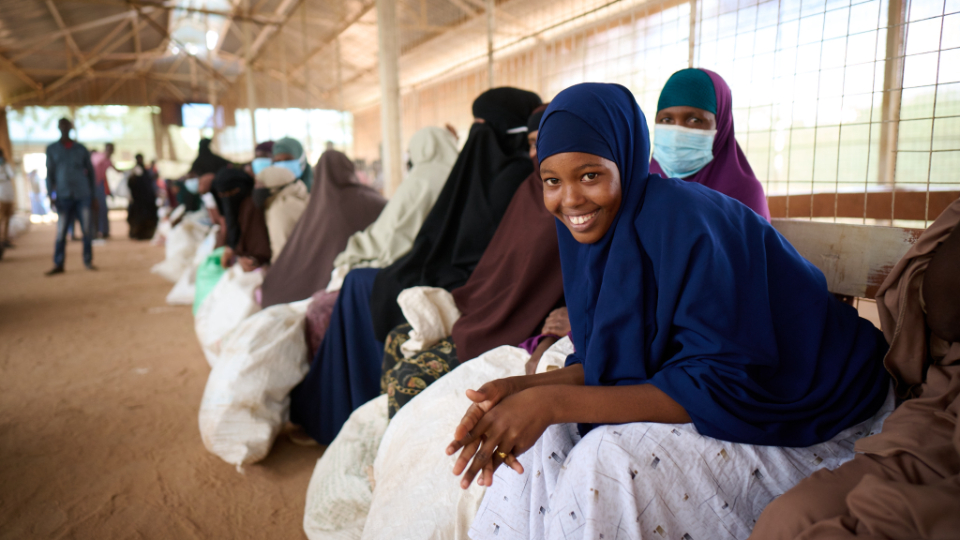
20221205_023408_Nilsson_LES_6096_.jpg
Women at the Ifo Refugee Camp in Dadaab, Kenya, sit in line for food rations on Monday, December 5, 2022.2022 by Intellectual Reserve, Inc. All rights reserved.The Church of Jesus Christ’s collaboration with WFP began in 2014. WFP Executive Director David Beasley toured the Church’s welfare operations in Salt Lake City in 2019. The two organizations worked together to fill hunger gaps during the COVID-19 pandemic.
About the World Food Programme
The United Nations World Food Programme is the world’s largest humanitarian organization, saving lives in emergencies and using food assistance to build a pathway to peace, stability and prosperity for people recovering from conflict, disasters and the impact of climate change.

20221206_103741_Nilsson_LES_4547_.jpg
A woman cooks food at the Ifo Refugee Camp in Dadaab, Kenya, on Tuesday, December 6, 2022.2022 by Intellectual Reserve, Inc. All rights reserved.World Food Program USA, a 501(c)(3) organization based in Washington, D.C., proudly supports the mission of the United Nations World Food Programme by mobilizing American policymakers, businesses and individuals to advance the global movement to end hunger. Our leadership and support help to bolster an enduring American legacy of feeding families in need around the world. Learn more about World Food Program USA’s mission.
Humanitarian Services of The Church of Jesus Christ
Humanitarian Services of The Church of Jesus Christ of Latter-day Saints relieves suffering, fosters self-reliance and provides opportunities for service. It follows the admonition of Jesus Christ to feed the hungry, give drink to the thirsty, take in the stranger, clothe the naked and visit the sick and afflicted.
 Download Photo
Download PhotoThe Church’s humanitarian outreach is made possible by the generous donations and volunteerism of Latter-day Saints and friends of the faith. More than 1 million workdays of labor are contributed each year by volunteers in support of welfare initiatives.
The Church sponsors relief and development projects in 195 countries and territories and gives assistance without regard to race, religious affiliation or nationality. Aid is based on the core principles of personal responsibility, community support, self-reliance and sustainability.
